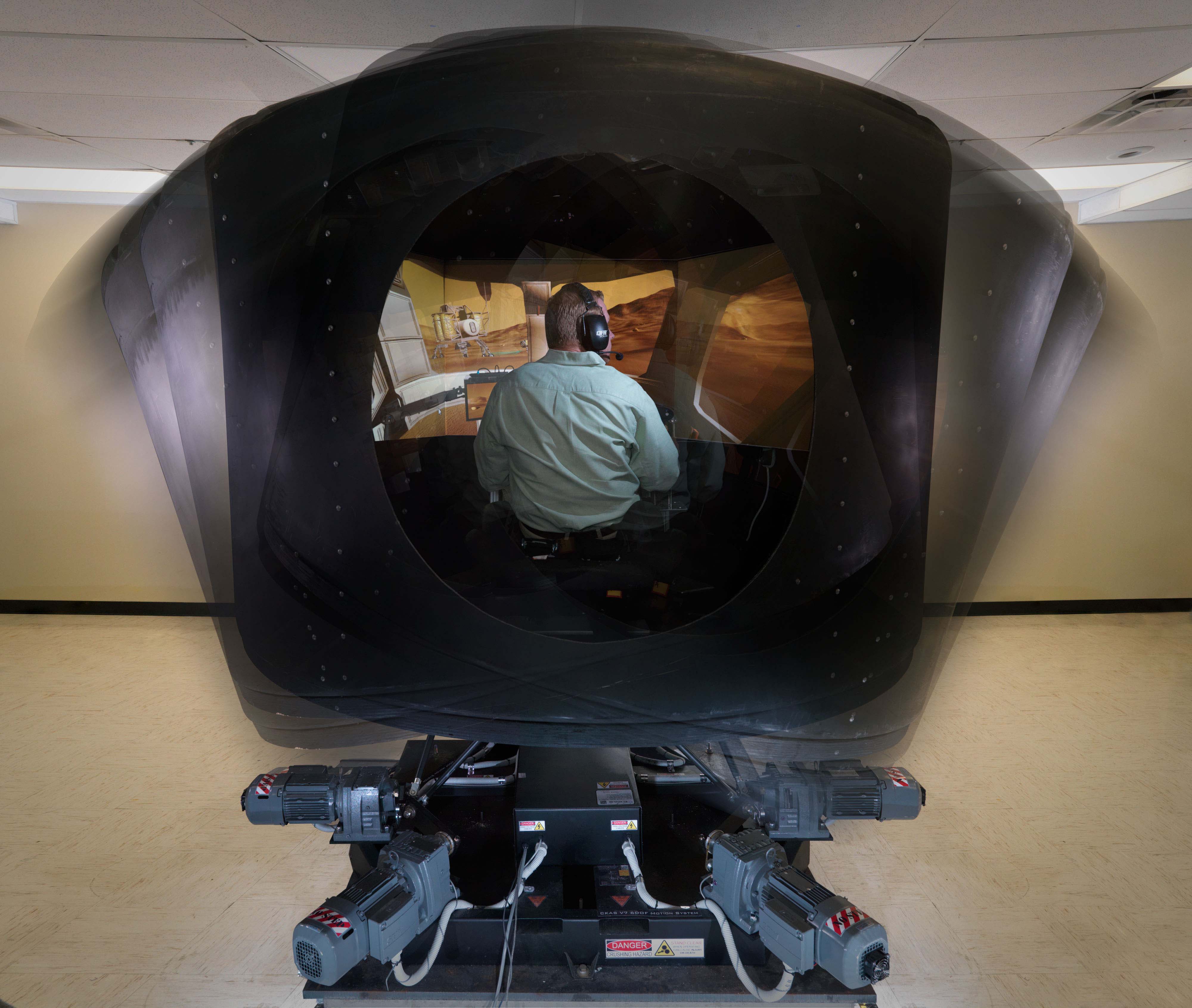The moving simulator is mounted on a CKAS “W” series hexapod: a compact, lightweight six degree-of-freedom motion system. The motion base is a Stewart type (Stewart 1965, Proc Inst Mech Eng 1965;180:371-86), with 6 independently actuated legs to position and orient the platform. The actuators (V4, CKAS, Melbourne) have a footprint of 2.1×2 m, weigh 250kg, and carry a payload of up to 320kg. A rigid platform (~2.2 m diameter) is bolted to the V4 motion base, upon which is mounted a professional racing seat, weighing 7.3 kg, with a 5-point safety harness (Corbeau FX1 Pro, Sandy, UT). The seat contains a detachable custom head restraint (consisting of a padded shell which conforms to the back of the skull and a Velcro strap placed across the forehead) and armrests. Three LCD flat-panel displays (20 kg total) are attached to the platform. Assuming a maximum subject weight of 116 kg, up to 170 kg is available for the circular test platform and mounting hardware for the simulator display and input devices.under construction
The simulation base is paired with a car racing simulation program RFactor and flight simulation packages Microsoft Flight Simulator X and X-plane 10. RFactor is used for all our motion based driving simulations. To date driving simulations have been the main use for the hexapod, however the Sydney Human Factors Research group has all the necessary controllers to interchange the driving cab from a car racing set-up to a cockpit flight control in order to conduct flight simulations.
The base can also be programmed independently using LabView to send out pre-determind motion information to the base as desired for studies.
Current studies involving the motion simulator are available here.



